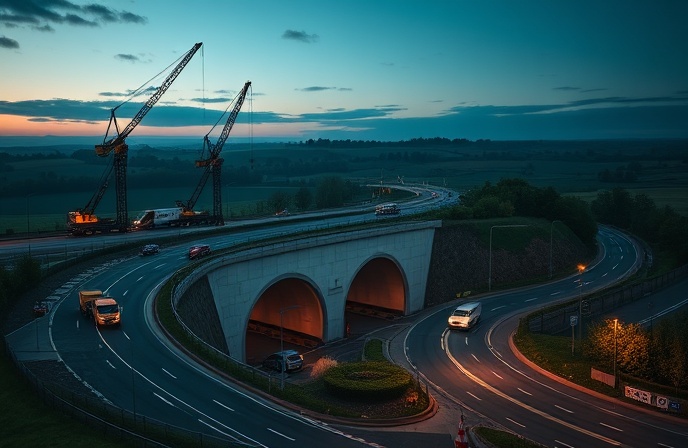Solar Powering Rail: GTR’s Green Revolution

The global railway industry is under increasing pressure to reduce its carbon footprint and contribute to global efforts to mitigate climate change. This article explores the significant role renewable energy sources, specifically solar power, are playing in achieving net-zero targets within the railway sector. We will examine a case study focusing on Govia Thameslink Railway (GTR)’s implementation of solar arrays at its depots, analyzing the benefits, challenges, and wider implications for the industry. Furthermore, we’ll delve into the broader context of sustainability initiatives within the rail sector, considering various strategies employed by operators globally to achieve environmental goals. The discussion will include the integration of renewable energy sources into existing infrastructure, the potential for advancements in technology, and the collaborative efforts necessary for widespread adoption of sustainable practices. This analysis will provide a comprehensive overview of the evolving landscape of sustainable railway operations and the crucial role of solar energy in shaping the future of the industry.
GTR’s Solar Initiative: A Case Study in Sustainable Rail Operations
Govia Thameslink Railway (GTR), a major UK rail operator, is actively pursuing its net-zero emissions target by 2050. A key component of this strategy is the installation of solar arrays across its operational infrastructure. The Bedford Cauldwell Walk depot project, featuring over 900 solar panels, exemplifies this commitment. This initiative is expected to generate approximately 322 MWh of electricity annually, significantly reducing GTR’s reliance on the national grid and lowering its carbon emissions. This project is not isolated; GTR aims to install at least 6,000 solar panels across its network, demonstrating a substantial investment in renewable energy infrastructure.
Partnerships and Community Engagement: A Collaborative Approach
GTR’s Bedford solar array project is a prime example of successful collaboration. The project is being undertaken in partnership with Energy Garden, a non-profit community climate group. This partnership exemplifies a broader trend in the railway industry, where collaborations between operators, renewable energy providers, and community organizations are becoming increasingly important. This model offers mutual benefits: GTR reduces its carbon footprint and operational costs, while Energy Garden utilizes excess power generation to fund community projects. This symbiotic relationship highlights the potential for sustainable initiatives to generate both environmental and social benefits.
Broader Trends in Railway Sustainability: Beyond Solar Power
While solar power is a key component of GTR’s sustainability strategy, it’s one element within a broader range of initiatives. The company is also undertaking projects such as replacing gas boilers with heat pumps and collaborating with Network Rail (NR) to electrify remaining diesel lines. This integrated approach, addressing various aspects of railway operations, demonstrates a holistic commitment to reducing the industry’s environmental impact. This multi-faceted strategy is mirrored across the global rail sector, with operators employing various methods, including the adoption of electric locomotives, optimized train scheduling for energy efficiency, and the use of lightweight rolling stock to reduce energy consumption.
Technological Advancements and Future Prospects
The integration of renewable energy into railway operations is constantly evolving. Initiatives like Siemens Mobility’s feasibility study on directly feeding solar energy to trains in the UK showcase the potential for innovative technological advancements. Furthermore, advancements in battery technology for rolling stock and improved energy management systems promise to further enhance the efficiency and sustainability of railway networks. The future of sustainable railway operations likely involves a combination of renewable energy sources, technological innovations, and collaborative partnerships. Continued investment in research and development, coupled with supportive policies, is crucial for achieving widespread adoption of these sustainable practices.
Conclusion
The integration of solar power into railway operations, as exemplified by GTR’s initiatives, represents a significant step toward achieving net-zero emissions targets within the rail industry. The Bedford depot project, in collaboration with Energy Garden, not only reduces GTR’s carbon footprint but also demonstrates the potential for successful partnerships between operators and community organizations. This model promotes both environmental and social benefits, highlighting the broader societal impact of sustainable railway initiatives. Beyond solar power, a multi-faceted approach encompassing the electrification of remaining diesel lines, the replacement of fossil fuel-based heating systems, and the exploration of innovative technologies like direct solar power feeding to trains is critical for the industry’s long-term sustainability. The success of these initiatives relies on continued investment in research and development, supportive government policies, and collaborative efforts between rail operators, technology providers, and community stakeholders. The future of sustainable railway operation hinges on a concerted effort to embrace innovation and collaboration, ensuring the industry plays a vital role in creating a greener, more environmentally responsible future. The ongoing evolution of technologies and the potential for synergies between various sustainable strategies promise further progress towards achieving the ambitious goal of net-zero emissions for the railway sector, contributing to a more sustainable global transportation system.





